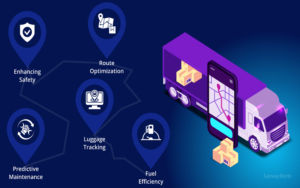The Essential Guide To Building Successful Mobile Apps

Mobile apps have become an integral part of our daily lives. We use apps for everything from communication, shopping, banking, entertainment, as well as more. With the rising popularity of smartphones and tablets, businesses are increasingly developing mobile apps to engage with customers and enhance their brand. However, mobile app development is not as simple as just throwing together some code. There are some best practices that should be followed to create a high-quality and successful app. This blog guides you all essential about things for mobile app development with the help of experts like AppSealing.
Following these guidelines will help build an app that delights users and achieves the intended business goals.
1. Understand Your Audience: The first step in mobile app development is identifying your target audience. Conduct user research to understand your users’ needs, pain points, as well as behavior patterns. Map out user personas to get an in-depth perspective of your ideal customers. This will allow you to build features that truly resonate with users. Don’t make assumptions about what users want. Rigorously test your app hypotheses with real users at every stage of development. Their feedback will point you in the right direction to create an app people will love using.
2. Focus on User Experience: Creating an intuitive user experience (UX) should be the number one priority. Ensure the app navigation and flows make sense through clear and consistent labeling and organization of content and options. Use common and familiar interface elements that users already know how to use and avoid overly complex features that require extensive learning. Speed and responsiveness are also key aspects – optimize performance and reduce loading times to deliver a smooth, lag-free UX. Don’t overload the interface with too many features or settings that distract from the core functions. Stick to the most useful and necessary core functions that directly solve users’ needs and achieve their goals. Overcomplicated apps with steep learning curves that confuse and frustrate users lead to low adoption rates and poor retention of users over time. Always thoroughly test the design for maximum usability, simplicity and ease of use.
3. Choose the Right Platform: Selecting the right development platform is crucial. Native development allow full access to device capabilities and deliver the best performance. Assume “write once, run anywhere” frameworks will provide the same experience as native apps. While they can save time as well as costs, beware of performance limitations and compatibility issues. Consider native development for complex, graphics-heavy apps.
4. Implement Offline Functionality: With unstable connectivity, mobile apps must handle offline scenarios gracefully. Use caching and background sync so users can still browse catalogues or enter data while offline. Then sync data back to the server when connection is restored. This delivers a smooth experience.Don’t assume your app will always have a perfect internet connection. Lack of offline support results in blank screens and error messages for users in spotty coverage areas, leading to immense frustration. Plan for offline usage from the start.
5. Ensure Security: Mobile apps handle sensitive user data, so security is imperative. Implement authentication checks, encrypt stored data, and validate all inputs. Follow secure coding practices and conduct thorough testing to identify any vulnerabilities that hackers could exploit. Don’t ignore security precautions or leave any loopholes in your code. A single breach can destroy users’ trust and damage your brand reputation. Take security seriously from day one to keep user data safe.
6. Regularly Update the App: Don’t launch and abandon your app – dedicated maintenance is required. Continuously update the app to fix bugs, add useful features, and deliver an improved experience. Stay on top of latest OS changes and deprecations. This shows users that you care. Don’t go months without releasing updates. If the app falls too far behind the latest OS or device capabilities, usability, as well as adoption, will decline. Maintain development velocity for ongoing improvements.
7. Optimize Energy Usage: Excessive battery drain is a surefire way to frustrate mobile users. Optimizing energy usage should be top-of-mind. Minimize background processing, network calls and display animations. Test on real devices and continuously monitor power consumption. Don’t ignore battery efficiency until users complain about it. By then it may be too late and they will have already uninstalled your app. Build energy awareness into your process so it becomes second nature.
8. Leverage Device Capabilities: Tap into native device features for enhanced utility. Access the camera and photo library for image sharing. Use the GPS for mapping and navigation. Leverage push notifications to re-engage inactive users. This boosts the app’s appeal and functionality. Don’t have a cookie-cutter app that simply brings your website to mobile. Deliver meaningful device-specific capabilities, or users will question why your app even needs to exist. Take full advantage of the hardware.
9. Rigorously Test the App: Mandatory comprehensive testing ensures catching bugs and edge cases. Proceed with the unit, integration, and user interface testing. Utilize automation frameworks for proper validation. Perform end–to–end testing of the core user journeys before every release. Don’t hang on manual click-testing all-by-itself. Reliability for mobile users is a must; hence automated testing is critical. Defects are costly and app credibility is critically damaged without test automation. Verify quality at every stage.
10. Monitor and Analyze Data: Through analytics, real-world utilization and the level of entanglement that follows are immeasurably valuable. Monitor vital indicators, such as release frequency, session length, conversion rates and retention. Measure trends to guide product roadmap and improve efficiency by prioritizing enhancements. Don’t go blind without data. Your inability to see the adoption will definitely prevent you from getting a holistic understanding of what is relevant and irrelevant to your users. Instead of waiting for a last-minute fire drill to implement tracking, do it sooner and foster data-informed action.
Building a successful mobile application entail striking an equilibrium between business objectives, technical limitations, and user preferences with app security concept. Adhering to mobile app development best practices outlined in this guide is the proper way to go for uiux design company in India. Near the core of your targeted audience and always drive simplicity, security, in addition to quality. This mindset, you are ideally poised to create another homerun application which users cannot do without.





